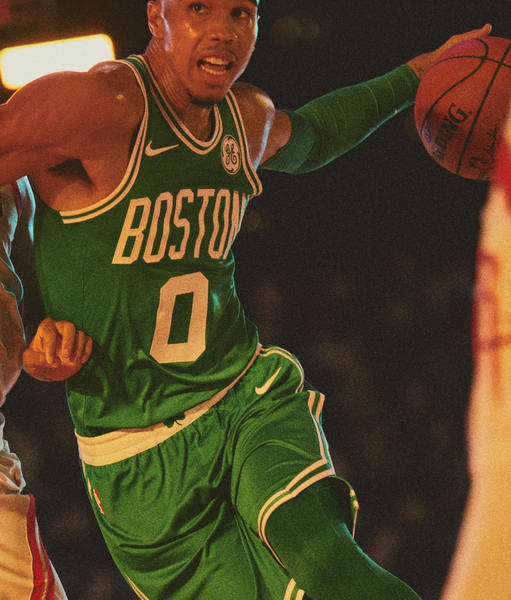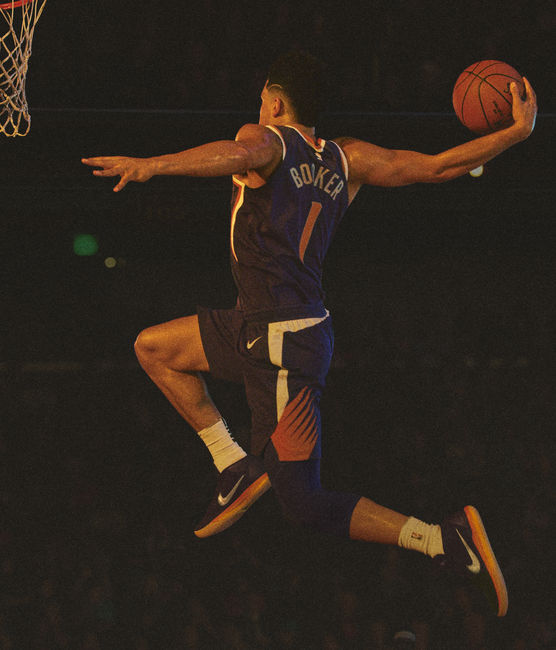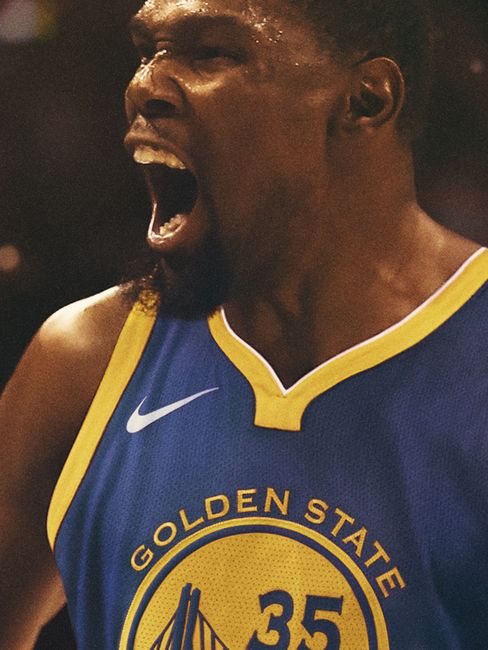Better Basketball Through Science With Team Nike

When Nike’s partnership with the NBA was cemented in June 2015, designers went to work with the goal of minimizing distractions by keeping the athletes cool, dry and mobile.
A new era is dawning in pro basketball courtesy of Nike’s partnership with the NBA, announced in June 2015 and beginning with the 2017/18 season. To get things going, the swoosh and the NBA shared details about how a team of Nike designers, engineers, pro players and sports scientists worked together to develop a new breed of technically advanced jersey and shorts.
Why does basketball apparel need to change? Because the game itself has evolved. Rule changes – including deregulation of zone defense and a smackdown on hand checking – meant that the game got faster and more fluid. While players learned to make lightning-quick decisions, teams started playing smaller lineups and made the move to wide-open offenses.
“From how the athletes move to the positions they play — even their body types are completely different today than they were five to 10 years ago,” said Kurt Parker, Nike VP of Apparel Design, in a statement. “That’s why we wanted to dramatically evolve both the performance and look of the uniforms.”
When Nike’s partnership with the NBA was cemented in June 2015, designers went to work with the goal of minimizing distractions by keeping the athletes cool, dry and mobile. At the Rio Olympics, the players debuted the Nike Vapor uniforms that featured high-performance knit jerseys and shorts built with Nike AeroSwift technology. “It was our starting point,” said Parker. “To prepare for the NBA, we had to re-examine every part of that uniform, and we’ve changed pretty much everything since Rio.”
During an average game, a basketball player may cover more than four miles with full-speed bursts that last about 1.6 seconds. An athlete can change directions every two seconds, totaling 1,000 per game. Some jump up to 42 times with an average liftoff time of 0.16 seconds. “A player will go from sitting on the bench to sprinting top speed to jumping as high as he can within seconds,” said Parker.
Designers overlaid the three atlas maps to understand how to design a uniform in three dimensions. For example, the maps indicated that the chest produces sweat and it’s a cling zone. “You’ll see guys constantly trying to pull their jerseys off of their chest — LeBron does it all the time,” explained Parker. “So, we realized that we needed to figure out a way for the jersey to wick the sweat without it being too baggy or too tight.
“Temperature is huge,” said two-time NBA MVP Steve Nash. “When a fabric breathes better and absorbs sweat better you can stay warm — but not be too warm on the court.”
By helping to improve temperature control, the maps also created a solution for the way the jersey feels. “Typically, the result of the game is decided in the last five minutes, so the last thing you want to do is fuss with your jersey during that time,” said Parker.
Designers modified the uniform based on range of motion information gleaned from the maps, including scalloping the back of the jersey around the shoulder and shifting the motion vent on the short toward the front so that when a player makes a cut or is on defense, it opens in a spot that allows them to move more freely. “Typically, players would size up to get more range of motion from their uniforms,” said Parker. “But thanks to these maps we were able to streamline the fit by tailoring the uniforms to their need.”
The design was then tested on several NBA teams including the Jazz, the Mavericks and the Blazers, as well as some college teams. Nike would research and make a version of the uniform, put it on the athletes for about a week’s worth of practices, take the athletes’ feedback to refine the uniform and create a new silhouette that they would then go back out and test on those same players. This process went on for about a year.
The uniform also needed to be versatile so that one style had to work for every athlete while feeling like it was custom-made for each player. “These guys are superhuman size, so you have to make something that works for KD at 6’9” and 240 pounds, LeBron at 6’8” and 250 pounds, Isaiah Thomas at 5’9” and 185 pounds and everyone in between,” said Parker.
In a league in which player ages run the gamut from 19-year-old rookies to 40-year-old veterans, finding the right style was tricky. “We find the older guys are more set in their ways of wanting a bigger, baggier uniform, and then the younger guys are a lot more open to shortening the shorts and slimming the jersey,” said Parker.
Beyond the functional and style details, the athletes indicated that honoring their emotional connection to the uniforms was important. “When you make it to the pro level, and Kyrie talked to us a lot about this, it’s like an elite fraternity,” said Parker. “They’re proud of that. When they look good, they feel good and they play good.”
The Nike NBA Association Edition and Icon Edition Uniforms launch September 29 on nike.com/nba. The Nike NBA Statement Edition Uniform will be available November 20 on nike.com/nba.
 Photos courtesy Nike
Photos courtesy Nike




 Photos courtesy Nike
Photos courtesy Nike